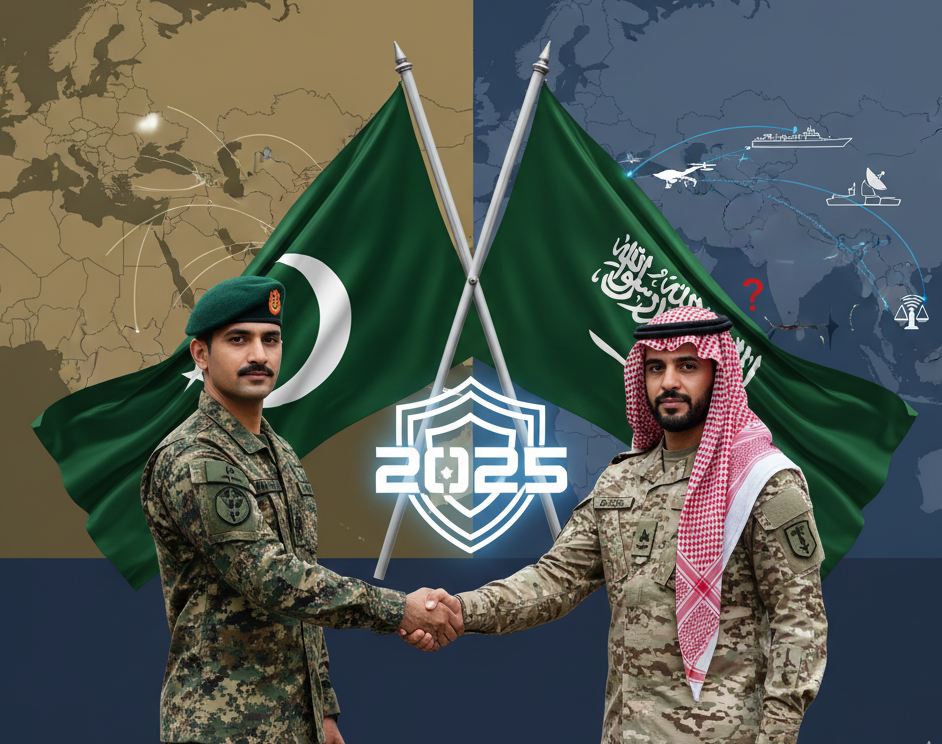Introduction
After more than half a decade of recalibrating foreign policy and exploring alternative alliances, Pakistan and Saudi Arabia have returned to their traditional strategic partnership. The newly signed defence cooperation pact, which includes a NATO-inspired clause of mutual defence — “any aggression against either country shall be considered aggression against both” — has reignited debates across the Middle East and South Asia.
The pact represents more than a bilateral agreement: it is a signal of regional recalibration, a reaffirmation of military cooperation, and a reminder of how global power shifts continue to shape Islamic world politics.
Historical Context of Strain
Relations between Islamabad and Riyadh have seen periodic highs and lows:
- 2015 – Yemen War Decision: Pakistan refused to send troops to Yemen despite Saudi requests, creating mistrust at a time when Riyadh envisioned an “Islamic NATO.”
- 2019 – Kuala Lumpur Summit: Pakistan’s decision to align briefly with an Iran–Turkiye–Malaysia bloc was viewed as a direct affront by Crown Prince Mohammed bin Salman (MBS).
- Personal Diplomacy Issues: Former Prime Minister Imran Khan’s strained ties with MBS further complicated the relationship.
During this period, Riyadh pursued deeper ties with India and explored cooperation through the India–Middle East Economic Corridor (IMEC) launched in 2023, while Pakistan leaned further into China’s Belt and Road Initiative (BRI) via CPEC.
Regional and Global Rebalancing
Saudi Arabia’s Shifts
- Restored ties with Iran (2023 Beijing-brokered deal).
- Re-engaged Turkiye and Russia.
- Advanced Vision 2030 economic diversification.
Pakistan’s Strategy
- Strengthened links with Turkiye and Azerbaijan.
- Sought Central Asian connectivity projects.
- Continued dependence on China for strategic and financial support.
This period of divergence underscored how both countries sought to expand influence, but ultimately realized the value of their foundational partnership.
The New Defence Pact: What’s Different?
While past agreements have existed, the 2025 pact introduces a mutual defence clause resembling NATO’s Article 5.
- Pakistan’s Lens: Primarily focused on deterrence against India, especially after the 2019 Pulwama–Balakot escalation.
- Saudi Arabia’s Lens: Interprets the pact through threats from Yemen’s Houthis and potential conflict involving Israel.
This divergence in threat perception highlights how one pact serves multiple strategic purposes depending on the observer.
Facts & Figures: Defence and Economic Stakes
- Saudi Arabia remains one of the top five global military spenders, with a defence budget of $75 billion in 2024 (SIPRI).
- Pakistan ranks among the world’s top 10 military forces by active personnel (640,000 regular troops).
- Remittances from Pakistani workers in Saudi Arabia crossed $7 billion in FY2024, making it Pakistan’s largest source of foreign remittances.
- Saudi investment commitments under Vision 2030 for Pakistan’s energy and mining sectors exceed $25 billion, with projects in Gwadar and Reko Diq under discussion.
Implications for India and the Wider Region
- India–Saudi ties remain robust: bilateral trade exceeded $53 billion in 2024, with India seen as a crucial Vision 2030 partner.
- In case of Indo-Pak conflict, Riyadh is more likely to mediate rather than choose sides, as seen in 2020.
- The pact thus sends a symbolic message to India, but economic pragmatism ensures Riyadh won’t jeopardize New Delhi’s partnership.
Beyond an “Islamic Bloc”: Realism vs Rhetoric
Some analysts framed the pact as the revival of an “Islamic NATO.” However, history shows:
- Past attempts at pan-Islamic defence coalitions failed due to diverging national interests.
- Saudi Arabia, UAE, and other Gulf monarchies now prioritize economic diversification and stability over ideological alliances.
- The idea of an Islamic bloc today is more aspirational for Iran than Riyadh, which increasingly values pragmatic state-to-state ties.
Lessons for Pakistan
Pakistan must draw key lessons from this renewed relationship:
- Economic Fragility Weakens Strategic Leverage
– Persistent dependence on Saudi bailouts reduces the partnership to transactional aid.
– Pakistan’s GDP growth averaged just 2.4% (2020–24) compared to India’s 6.3%, underlining the need for internal reforms. - Defence Alone Is Not Enough
– True resilience lies in sustainable growth, political stability, and regional integration. - Diversify Beyond Aid Dependency
– Saudi cooperation offers opportunities in energy, agriculture, and defence co-production if Pakistan proactively engages.
FAQs
Q: What is the significance of the new Pakistan–Saudi pact?
A: It introduces a NATO-style clause of collective defence, symbolizing a stronger security guarantee.
Q: Will Saudi Arabia support Pakistan against India militarily?
A: Realistically, no. Riyadh values India too much economically but may act as a mediator.
Q: How does this pact benefit Pakistan economically?
A: Beyond defence, Saudi Arabia is set to invest billions in mining, energy, and infrastructure under Vision 2030.
Conclusion
The Pakistan–Saudi Arabia defence pact of 2025 represents both a return to tradition and an adaptation to new realities. While it won’t birth an “Islamic NATO,” it does restore strategic depth to a historically pivotal relationship.
For Pakistan, the real challenge lies in translating this defence partnership into economic resilience and diplomatic credibility. For Saudi Arabia, it demonstrates a willingness to balance its ties between Pakistan, India, and Iran — proving once again that in today’s multipolar world, alliances are fluid, but interests remain constant.







